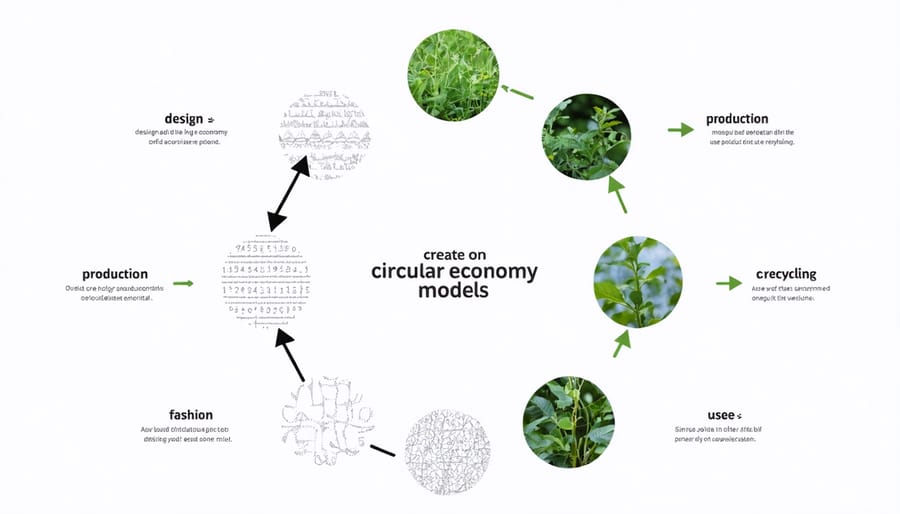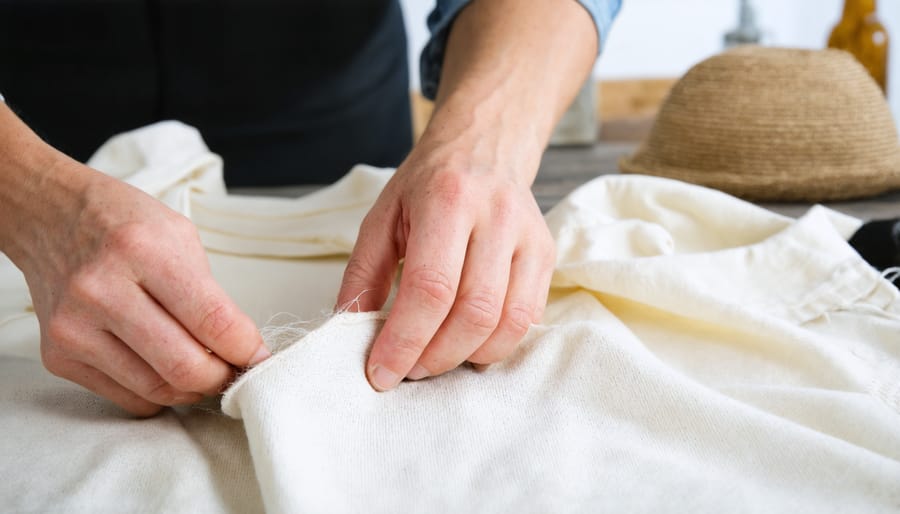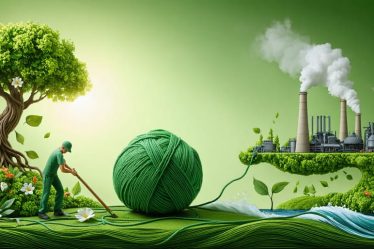
The fashion industry stands at a critical crossroads, with fast fashion contributing to 10% of global carbon emissions and generating millions of tons of textile waste annually. The Ellen MacArthur Foundation has emerged as a powerful voice in transforming this unsustainable model, championing a circular economy approach that’s revolutionizing how we think about clothes. Their groundbreaking research reveals that a garbage truck full of textiles is landfilled or burned every second, yet 95% of these materials could be reused or recycled.
As someone who’s witnessed the fashion industry’s evolution over the past decade, I’ve seen firsthand how the Foundation’s principles are reshaping consumer behavior and industry practices. Their vision goes beyond simply reducing waste – it’s about reimagining a fashion system where clothes are designed to last longer, be worn more, and be recycled effectively. Through partnerships with major brands and innovative startups, they’re proving that sustainable fashion isn’t just an idealistic dream but a viable business model that’s already taking shape.
The Foundation’s work challenges us to rethink our relationship with clothing and presents a compelling roadmap for a future where fashion works for everyone – consumers, businesses, and our planet.
The Ellen MacArthur Foundation’s Vision for Circular Fashion
From Linear to Circular: Reimagining Fashion’s Future
Imagine fashion as a journey, not just a one-way street. While traditional fashion follows a simple “take-make-waste” path, circular fashion reimagines this journey as an endless loop of possibilities. I remember when I first learned about this concept – it completely changed how I viewed my closet!
Instead of clothes ending up in landfills after a few wears, circular fashion creates a system where garments are designed to be reused, recycled, or biodegraded. It’s like giving each piece of clothing multiple lives! The Ellen MacArthur Foundation has shown how quality sustainable fashion can thrive in this circular model.
Think of it as nature’s way of doing things – where nothing goes to waste. Materials are carefully chosen to be safe and renewable, clothes are made to last longer, and when they’re no longer wearable, they become resources for new items. This approach doesn’t just reduce waste; it creates a thriving fashion ecosystem where style and sustainability work hand in hand.
The best part? We’re all part of this circle. Whether we’re sharing clothes, choosing timeless pieces, or supporting brands that embrace circularity, each choice helps close the loop.

Key Principles of the Foundation’s Fashion Initiative
The Ellen MacArthur Foundation’s fashion initiative centers around three transformative principles that are revolutionizing how we think about our clothes. First, there’s the “circular design” approach, which focuses on creating garments that can be easily recycled, repaired, or repurposed. As someone who’s been learning to mend my own clothes, I’ve seen firsthand how this mindset can extend a garment’s life.
The second principle emphasizes using safe and renewable materials. This means moving away from harmful synthetic fabrics and embracing sustainable alternatives like organic cotton and recycled materials. Think of it as choosing ingredients for a healthy meal – what goes into our clothes matters just as much!
Finally, there’s the push for new business models that prioritize clothing rental, resale, and repair services. It’s amazing to see how many local clothing swap events and vintage shops are popping up in response to this movement. These models help us move away from the “take-make-waste” pattern and toward a more sustainable fashion future.
The Foundation’s approach isn’t just about making better clothes – it’s about reimagining our entire relationship with fashion in a way that benefits both our wardrobes and our planet.
Making Sustainable Fashion Work for Your Wardrobe
Smart Shopping Strategies
Making mindful fashion choices doesn’t mean sacrificing style or breaking the bank. By adopting smart sustainable fashion practices, you can build a wardrobe that’s both eco-friendly and personally fulfilling.
Start by taking inventory of what you already own and identifying your true style preferences. Before making any purchase, ask yourself if the item will work with at least three existing pieces in your wardrobe. Consider implementing a 24-hour rule for non-essential purchases to avoid impulse buying.
Quality should always trump quantity. Look for well-made pieces with sturdy stitching, natural fibers, and timeless designs that transcend seasonal trends. While these items might cost more initially, they’ll save you money in the long run through extended wear.
Research brands that align with circular economy principles. Many companies now offer rental services, clothing repair programs, or take-back schemes. Some of my favorite finds have come from clothing swaps and vintage stores, where unique pieces often tell their own stories.
Remember to care for your clothes properly. Washing at lower temperatures, air-drying when possible, and promptly addressing repairs can significantly extend garment life. By shopping with intention and maintaining what we own, we can all contribute to a more sustainable fashion future.
Extending Your Clothes’ Lifespan
You know that feeling when you discover a favorite shirt has become unwearable way too soon? I’ve been there, and it’s what inspired me to dive deep into clothing care techniques that truly work. The good news is that extending your clothes’ life isn’t just about preserving your wardrobe – it’s a powerful way to combat fast fashion’s environmental impact.
Start by washing your clothes less frequently and at lower temperatures. Most items don’t need washing after every wear – a good airing out often does the trick. When you do wash, turn garments inside out, use gentle cycles, and opt for cold water when possible. This not only preserves colors but also reduces microfiber shedding.
Invest in proper storage solutions. Fold heavy knits instead of hanging them to prevent stretching, and use padded hangers for delicate items. Keep clothes away from direct sunlight to prevent fading, and ensure your storage space is clean and dry to avoid mold growth.
Small repairs can make a huge difference. Learn basic sewing skills to fix loose buttons or small tears immediately. Keep a small repair kit handy, and don’t be afraid to seek professional help for more complex fixes – it’s usually more cost-effective than replacement.
Remember, proper care isn’t just about maintenance; it’s about developing a mindful relationship with your clothes. When we treat our garments with respect, they reward us with longer wear and better appearance.
Small Changes, Big Impact

Building a Sustainable Capsule Wardrobe
Creating a sustainable wardrobe doesn’t mean starting from scratch – it’s about thoughtfully curating pieces that work together while minimizing environmental impact. When building a perfect wardrobe, focus on versatile, high-quality pieces that can be mixed and matched for various occasions.
Start by assessing what you already own and identify any gaps. Choose a color palette that reflects your style while ensuring pieces complement each other. Invest in timeless basics like a well-fitted blazer, quality denim, and classic white shirts made from sustainable materials like organic cotton or Tencel.
Look for brands that prioritize durability and ethical production. Consider cost-per-wear rather than just the price tag – a higher-quality item that lasts years is more sustainable than frequently replacing cheaper alternatives. Aim for pieces that can create at least three different outfits with your existing clothes.
Remember to include seasonal items that can be layered, like lightweight cardigans and versatile dresses. When shopping, ask yourself if each new piece truly adds value to your wardrobe. Consider renting special occasion wear instead of buying items you’ll rarely use.
Learn basic clothing care to extend garment life – proper washing, storing, and minor repairs can significantly increase longevity. By building a thoughtful capsule wardrobe, you’ll reduce waste while always having something perfect to wear.
Conscious Care and Repair
Let’s talk about giving your clothes the love they deserve! As someone who used to toss clothes into the washer without a second thought, I’ve learned that mindful care can truly transform our wardrobes and help break the fast fashion cycle.
Start by reading care labels – they’re like little instruction manuals for keeping your clothes happy. Wash your clothes in cold water when possible, and turn them inside out to protect prints and prevent fading. For delicate items, consider hand washing or using a mesh bag in the machine. I’ve saved countless sweaters this way!
Invest in quality hangers that support your garments’ shape, and fold heavy knits to prevent stretching. Store clothes in a cool, dry place away from direct sunlight to prevent fading and fabric degradation. For shoes, use shoe trees or stuff them with paper to maintain their shape.
When small issues arise, don’t rush to replace items. Learn basic mending skills like sewing on buttons or fixing small holes. You’d be amazed how empowering it feels to repair rather than replace! Consider hosting clothing swap parties with friends where you can share care tips and give pre-loved items a second life.
Remember, treating our clothes with respect isn’t just about saving money – it’s about changing our relationship with fashion and contributing to a more sustainable future.

The Ellen MacArthur Foundation’s research on fast fashion has opened our eyes to the urgent need for change in our shopping habits. As someone who used to be caught up in the excitement of constant new arrivals and seasonal trends, I understand how challenging it can be to shift our mindset. However, the foundation’s work shows us that small changes can lead to significant impact.
By embracing circular fashion principles, we can all contribute to a more sustainable future. Start by asking yourself simple questions before each purchase: “Will I wear this at least 30 times?” or “Could I borrow or rent this instead?” Consider exploring secondhand shopping, clothing swaps with friends, or supporting brands committed to sustainable practices.
Remember, transforming the fashion industry isn’t about perfection – it’s about progress. Whether you’re just beginning your sustainable fashion journey or you’re already committed to conscious consumption, your choices matter. Share your sustainable fashion victories with friends, support local repair services, and stay informed about innovations in circular fashion.
Together, we can help create the change the Ellen MacArthur Foundation envisions: a fashion industry that works for everyone while respecting our planet’s boundaries. Let’s make conscious fashion choices that reflect not just our style, but our values and hope for a sustainable future.



